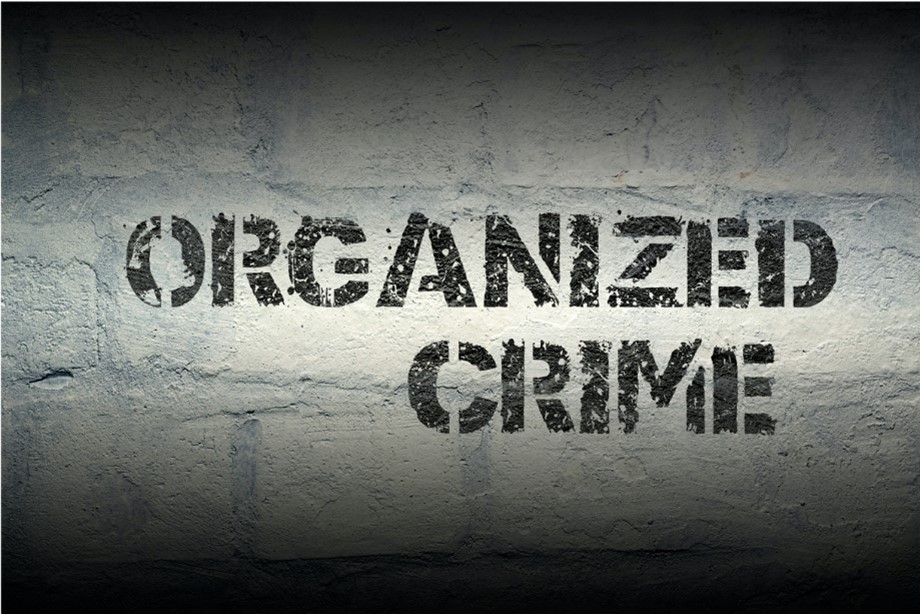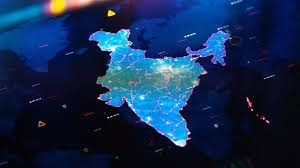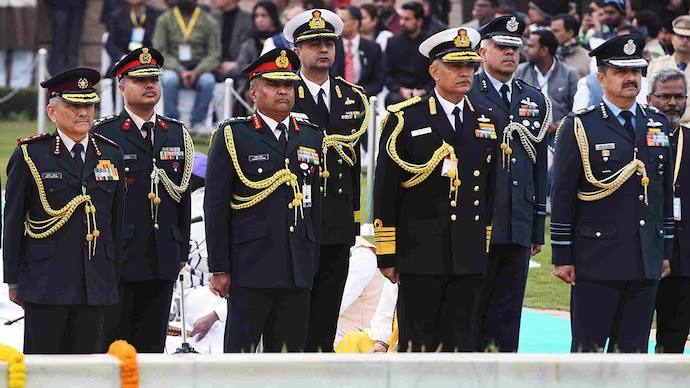- Courses
- GS Full Course 1 Year
- GS Full Course 2 Year
- GS Full Course 3 Year
- GS Full Course Till Selection
- Answer Alpha: Mains 2025 Mentorship
- MEP (Mains Enrichment Programme) Data, Facts
- Essay Target – 150+ Marks
- Online Program
- GS Recorded Course
- Polity
- Geography
- Economy
- Ancient, Medieval and Art & Culture AMAC
- Modern India, Post Independence & World History
- Environment
- Governance
- Science & Technology
- International Relations and Internal Security
- Disaster Management
- Ethics
- NCERT Current Affairs
- Indian Society and Social Issue
- NCERT- Science and Technology
- NCERT - Geography
- NCERT - Ancient History
- NCERT- World History
- NCERT Modern History
- CSAT
- 5 LAYERED ARJUNA Mentorship
- Public Administration Optional
- ABOUT US
- OUR TOPPERS
- TEST SERIES
- FREE STUDY MATERIAL
- VIDEOS
- CONTACT US
Linkages between organized crime and terrorism
Linkages between organized crime and terrorism

Linkages between organized crime and terrorism
What are organised crimes?
- Organized crime refers to a group of individuals who work together to engage in illegal activities for financial gain. These groups can be highly structured and operate across multiple locations, using violence, intimidation, and corruption to control their activities and maintain their power.
- Interpol has defined organised crime as “Any group having a corporate structure whose primary objective is to obtain money through illegal activities, often surviving on fear and corruption”
- Organized crime can take many forms, including drug trafficking, human trafficking, smuggling, money laundering, fraud, cybercrime, and extortion. These activities are often carried out on a large scale and involve the coordination of many individuals, often across international borders.
What is terrorism?
- Terrorism refers to the use of violence or the threat of violence to intimidate or coerce individuals or governments for political or ideological purposes. The aim of terrorism is to create fear and panic among the targeted audience and to influence public opinion or government policy.
- Terrorist acts can take many forms, including bombings, shootings, kidnappings, hijackings, and cyber attacks. Targets can include civilians, government officials, military personnel, and infrastructure such as transportation systems, buildings, and communication networks.
How organised crimes and terrorism are linked?
Organized crime and terrorism are two distinct forms of illicit activity, but they can be linked in several ways.
- One way in which organized crime and terrorism are linked is through the financing of terrorism. Organized crime groups, such as drug cartels, may provide financial support to terrorist organizations in exchange for protection or to further their own interests. Terrorist groups may also engage in criminal activities, such as drug trafficking, to raise funds for their operations.
- Another way in which organized crime and terrorism are linked is through the sale of illicit goods and services. Organized crime groups may provide arms, explosives, and other supplies to terrorist organizations, or they may engage in smuggling activities to help terrorists evade detection. Terrorists may also use criminal networks to obtain fraudulent documents, money laundering services, and other forms of illicit support.
Ensure your Civil Services Dream Career
Click Here to Book your free Counseling
Examples of terrorism and organised crimes linkages in India
If we look at some of the regions in the country affected by terrorism, this linkage becomes apparent.
- In the Northeast, extortion is the fundamental basis for funding all forms of terrorism. In addition to this, kidnapping has been used extensively for spreading terror and raising funds. Human trafficking, drug trafficking and gun running are some of the other criminal activities that have been common in these areas.
- In J&K, counterfeit currency has been a major source of funding terrorism.
- In the Maoist terror movements, extortion is yet again a common phenomenon. They have also indulged in robberies of banks to fund their movement. There have also been reports of cuts being enforced on drug yielding crops in the region.
- The Indian Mujahideen has also resorted to crime to raise funds. This includes robberies, kidnappings, etc.
Challenges in controlling organised crimes in India
- Political Connections: One of the biggest challenges in controlling organized crime in India is the political connections that many organized crime groups have. These groups often have ties to political parties and use their influence to avoid prosecution or to secure favorable treatment. For example, the Mumbai underworld has had connections to political parties for decades, and politicians have been known to protect and support them.
- Poor Coordination: Another challenge in controlling organized crime in India is the lack of coordination between law enforcement agencies. Different agencies have different priorities and work in silos, making it difficult to share information and coordinate efforts. For example, the lack of coordination between the Mumbai police and the Maharashtra Anti-Terrorism Squad (ATS) allowed the 2008 Mumbai attacks to occur.
- Limited Resources: Law enforcement agencies in India often have limited resources, including personnel and equipment, making it difficult to tackle organized crime effectively. For example, the Central Bureau of Investigation (CBI), India's premier investigating agency, has a shortage of investigators, and many cases remain unresolved for years.
- Technology: Organized crime groups in India are increasingly using technology to carry out their illegal activities, making it difficult for law enforcement agencies to track and intercept them. For example, cybercriminals use sophisticated techniques to steal sensitive data and money from individuals and organizations.
- Corruption: Corruption is a significant challenge in India and is often a contributing factor in organized crime. Corrupt officials and police officers provide protection to organized crime groups in exchange for bribes. For example, the mining mafia in India often bribes officials to allow illegal mining activities.
- Inadequate Legal Framework: The current law is inadequate because it only targets individuals and not criminal organizations or businesses. It's hard to prove conspiracies in court because they start in the shadows.
- Difficulties in Obtaining Evidence: Organized criminal organizations are distinguished from law enforcement by their hierarchical organizational structure. Due to rules of evidence, including the non-admissibility of criminals' confessions before the police, it may be possible to convict the actual criminals, but it is difficult to move up the criminal hierarchy.
- No one agency: India lacks a central agency to coordinate with state agencies in the fight against organized crime.
- Presence of transnational elements: Some of the crimes are planned outside of the nation. These organized criminals have safe havens in India's neighboring tough terrain.
How to counter this nexus?
- It is necessary to dismantle the nexus that is flourishing due to its complementary nature in order to make it simpler to deal with them separately.
- There is a requirement for tweaking of the criminal examination in order to find and lay out connections of a criminal organization with psychological warfare.
- Establishing specialized units to conduct investigations and improving coordination. In order for the specialized unit to function freely, it needs competent human resources, financial resources, technical expertise, and the appropriate legal backing.
- The existence of numerous stakeholders, including state police, border security, the financial sector, and special units like narcotics departments, necessitates legal backing.
- To combat the nexus, interstate coordination and a group like the National Counter Terrorism Center are required. National and international coordination will benefit from it.
- India must continue to advocate for improved policy, coordinated actions against state-sponsored terrorism, and terrorist financing in the international arena.
- Resolutions passed by the UN Security Council and other institutional mechanisms like the FATF can help foster international cooperation.
Steps taken in this regards
Unlawful Activities Prevention Act (UAPA)
- It makes it easier to stop people and organizations from doing certain illegal things.
- Economic offenses are now included in the definition of terrorist activities under the 2012 amendment.
- Additionally, it granted authorities the authority to seize or forfeit property equivalent to the involved counterfeit currency.
The National Investigation Agency Act, 2008
- Other than offences of terrorism, it also deals with counterfeit currency, human trafficking, narcotics, organized crime.
Prevention of money laundering act:
- The prevention of Money Laundering act also targets money laundering activities in a focused manner to counter the hawala transactions.
Creation of NATGRID and CCTNS for intelligence and criminal data gathering.
International efforts
- The United Nations Convention on Transnational Organized Crime, also known as the Palermo Convention, is a multilateral treaty that aims to prevent and combat transnational organized crime. It was adopted by the United Nations General Assembly in 2000 and entered into force in 2003.
- The Financial Action Task Force (FATF) is an intergovernmental organization that was established in 1989 by the G7 countries to combat money laundering and terrorist financing. The FATF sets international standards for anti-money laundering (AML) and counter-terrorist financing (CTF) policies and conducts peer reviews to assess the effectiveness of countries in implementing these standards.
- UNSC Resolution 2482: In 2019, the Security Council adopted resolution 2482, which urged Member States to address the links between terrorism and organized crime, by adopting policy measures. Great strides have been made to better understand the linkages between terrorists and organized criminal groups owing to the adoption of Resolution 2482
Conclusion
Not only is organized crime a threat on a national level, but it has also become an international threat, necessitating a global response from all nations.
We need to improve our cyber security and coastal security, as registration on wooden boats is an easy way for terrorists to enter India, and the police department should be well-equipped with trained personnel, modern weapons, and more people.
TO ACCESS ALL THE GENERAL STUDIES NOTES CLICK ON: https://ensureias.com/notes



